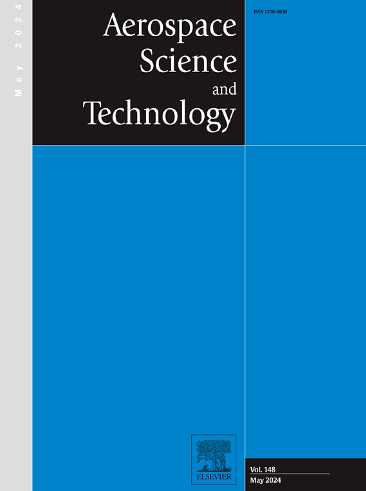Analysis of the dynamic characteristics of the forced start-up procedure of H2O2/ kerosene gas generator cycle rocket engine system
IF 5
1区 工程技术
Q1 ENGINEERING, AEROSPACE
引用次数: 0
Abstract
The pump-fed H2O2 propulsion system is an important direction for future aerospace development, and the start-up process is an accident-prone stage in launch missions. However, the start-up characteristics of the pump-fed H2O2/ kerosene liquid rocket engines remain unclear. This paper built the basic components and overall system of a promising H2O2/ kerosene gas generator cycle engine system. The dynamic characteristics of the forced start-up procedure were analyzed, and a single factor sensitivity analysis with 9 factors and 9 levels and a multi factor sensitivity analysis with a orthogonal experiment based on range method were conducted. The distribution, threshold, and reliability of the dynamic processes were also obtained through Monte Carlo method and Pearson test. The results show that the parameter settings during the forced start-up process are reasonable, and the coupling between the combustion components and the turbopump is good without overshoot. The pressure inside the main combustion chamber changes steadily and takes about 1 second to reach 95 % of the rated pressure. The maximum temperature in the cooling channel during the start-up process is about 358 K, which is within the safe range. The factors that have the greatest impact on the start-up process include the rotational inertia of the turbopump, the pressure, temperature and molar mass of the start-up gas. The dynamic response time of the start-up process follows a normal distribution, just like the machining error of the components. The point estimation of the reliability of , which reaches 95 % of the rated thrust, is 0.95297, and the point estimation of the reliability of the valve OGV opening time is 0.99322. The actual threshold of is 92.508 %∼107.610 %, and the actual threshold of is 99.656 %∼100.315 %. These findings will contribute to the design, manufacturing and hot test of H2O2/ kerosene gas generator cycle liquid rocket engines.
求助全文
约1分钟内获得全文
求助全文
来源期刊

Aerospace Science and Technology
工程技术-工程:宇航
CiteScore
10.30
自引率
28.60%
发文量
654
审稿时长
54 days
期刊介绍:
Aerospace Science and Technology publishes articles of outstanding scientific quality. Each article is reviewed by two referees. The journal welcomes papers from a wide range of countries. This journal publishes original papers, review articles and short communications related to all fields of aerospace research, fundamental and applied, potential applications of which are clearly related to:
• The design and the manufacture of aircraft, helicopters, missiles, launchers and satellites
• The control of their environment
• The study of various systems they are involved in, as supports or as targets.
Authors are invited to submit papers on new advances in the following topics to aerospace applications:
• Fluid dynamics
• Energetics and propulsion
• Materials and structures
• Flight mechanics
• Navigation, guidance and control
• Acoustics
• Optics
• Electromagnetism and radar
• Signal and image processing
• Information processing
• Data fusion
• Decision aid
• Human behaviour
• Robotics and intelligent systems
• Complex system engineering.
Etc.
 求助内容:
求助内容: 应助结果提醒方式:
应助结果提醒方式:


